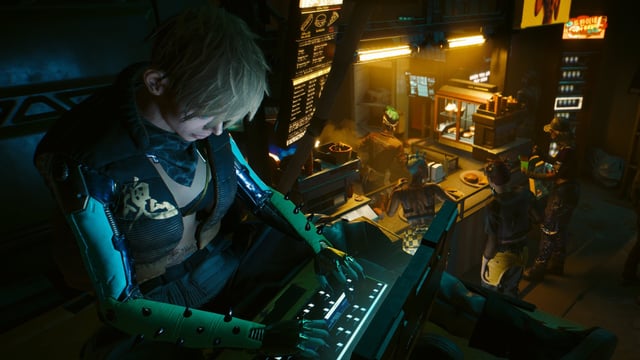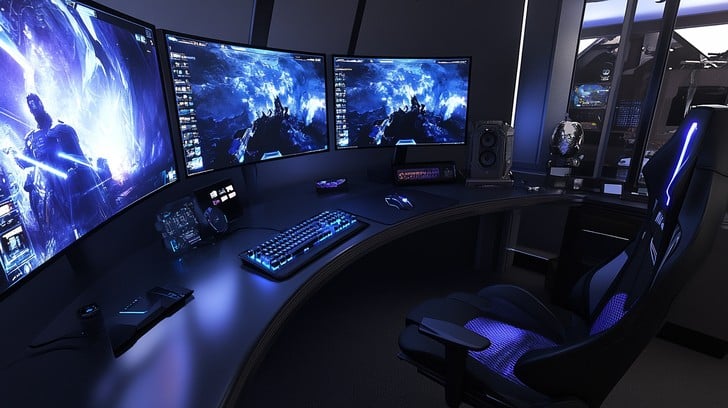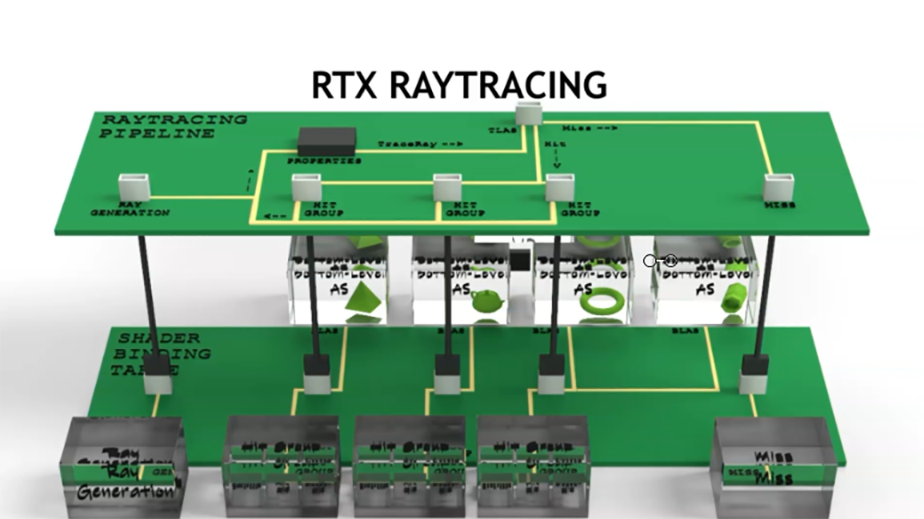Night City Rebuilt: Dr.

Hello, fellow digital adventurers! Dr. Emilia Rossi here, reporting to you from my sun-drenched corner office in the mathematics building at the University of Pisa. As many of you know – or perhaps discovered through my alter ego, PixelPerfect_Pisa, on those late-night optimization forums – I’m deeply fascinated by the intersection of theoretical computer science and its tangible expression in video games. Today, I want to delve into CD Projekt Red's recent announcement regarding Cyberpunk 2077: Ultimate Edition for PC and explore its potential to showcase the latest advancements in graphics and processing power. Optimization isn't magic; it's clever math, and Cyberpunk offers a captivating canvas for this craft.
Dr. Emilia Rossi pictured in her University of Pisa lab, analyzing ray tracing visualizations. This image illustrates the connection between Dr. Rossi's theoretical research and its practical application in analyzing and optimizing advanced graphics in video games like Cyberpunk 2077.
Ray Tracing Enhancements: A Deep Dive
One of the most exciting prospects of Cyberpunk 2077: Ultimate Edition is the potential to push ray tracing technology to its limits. The original implementation was already impressive, but with modern hardware, we can explore even more ambitious rendering techniques.
Path Tracing Integration: Is Full Immersion Feasible?
Can we expect full path tracing in Cyberpunk 2077? The short answer is: it’s complicated. Path tracing simulates light transport more accurately than traditional ray tracing, resulting in incredibly realistic lighting and shadows. However, the computational cost is enormous.
 A side-by-side comparison showcasing the visual quality of V in Cyberpunk 2077 with and without AI-driven LOD generation. The zoomed-in view on the right reveals the intricate detail preserved with the optimized model.
A side-by-side comparison showcasing the visual quality of V in Cyberpunk 2077 with and without AI-driven LOD generation. The zoomed-in view on the right reveals the intricate detail preserved with the optimized model.
Theoretically, current high-end PCs equipped with Nvidia's RTX cores and AMD's Ray Accelerators could handle it, but only with significant optimization. Techniques like importance sampling (focusing computational power on the most important light paths) and advanced denoising algorithms are crucial. Even then, expect a substantial performance hit. I recall a SIGGRAPH panel discussion a few years back where I argued true path tracing in AAA games was still five years away. While we're getting closer, Cyberpunk's Ultimate Edition will likely represent a strategic blend of ray-traced effects and rasterization to achieve a balance between visual fidelity and playable frame rates. It is important to know your rig!
DLSS 3.5 Ray Reconstruction and FSR 3: AI to the Rescue?
Nvidia's DLSS 3.5 (Ray Reconstruction) and AMD's FidelityFX Super Resolution 3 (FSR 3) offer promising avenues for improving both performance and visual fidelity in ray-traced environments. DLSS 3.5, in particular, utilizes AI to denoise ray-traced images, resulting in smoother, more stable visuals with less performance overhead. FSR 3 takes a similar approach, leveraging machine learning to upscale lower-resolution images while minimizing artifacts.
 A stunning ray-traced reflection in Cyberpunk 2077: Ultimate Edition, enhanced by DLSS 3.5 Ray Reconstruction, showcasing the improved image quality and realism in the rain-slicked streets of Night City.
A stunning ray-traced reflection in Cyberpunk 2077: Ultimate Edition, enhanced by DLSS 3.5 Ray Reconstruction, showcasing the improved image quality and realism in the rain-slicked streets of Night City.
Both technologies rely on spatio-temporal variance reduction, a technique I've been following closely in recent research (see, for example, Gupta et al., "Spatio-Temporal Variance Reduction for Real-Time Ray Tracing," ACM Transactions on Graphics, 2023). The effectiveness of each technology depends on factors like image quality preferences, upscaling artifacts tolerance, and hardware compatibility. CD Projekt Red will need to carefully tune these algorithms to achieve optimal results across a range of PC configurations.
Custom Ray Tracing Effects: Night City Under a New Light
Beyond global illumination, what custom ray tracing effects could truly elevate Cyberpunk 2077's visual fidelity? Ray-traced reflections on the perpetually wet streets of Night City would be stunning, accurately mirroring the neon-drenched cityscape. More accurate shadows cast by the countless holographic advertisements would add another layer of realism. And imagine dynamic global illumination filtering through the windows of mega-buildings, creating a more immersive and believable urban environment.
The challenges lie in balancing these effects with performance. Each additional ray-traced effect adds to the computational burden. However, with clever optimization and careful artistic direction, CD Projekt Red could selectively implement these effects to maximize visual impact without crippling performance.
Procedural Generation and Environmental Detail: Breathing Life into Night City
Cyberpunk 2077's Night City is already a marvel of world design, but procedural generation offers exciting possibilities for adding even greater depth and detail.
Micro-Detail Generation: The Devil in the Details
How can procedural generation be used to add micro-detail? Imagine realistic surface textures on decaying building facades, subtle variations in graffiti art, and dynamic clutter like digital newspapers and scattered trash realistically strewn across streets and alleys.
 In-game graphics settings for Cyberpunk 2077: Ultimate Edition, showcasing customizable graphics options, resolution settings, and advanced features like ray tracing and DLSS.
In-game graphics settings for Cyberpunk 2077: Ultimate Edition, showcasing customizable graphics options, resolution settings, and advanced features like ray tracing and DLSS.
Procedural generation algorithms can create this level of detail by following a set of rules and parameters. I've spent a considerable amount of time exploring the creation of procedural cities (Rossi, E. "Procedural Urbanism: Algorithms for City Generation," Journal of Computer Graphics, 2018). Cyberpunk provides an ideal setting for this technology, and would also reduce development time!
AI-Driven Asset Placement: A Smarter City
Beyond micro-details, AI can play a crucial role in intelligently placing assets within the game world. Rather than manually placing every trash can, every flickering neon sign, AI can be trained to analyze environments and place objects in a realistic and visually appealing manner.
For example, algorithms could mimic patterns of urban decay observed in real-world cities like Detroit, adding authenticity to Cyberpunk's dilapidated districts. This would not only save development time but also result in a more believable and immersive environment.
Dynamic World Events: A City That Reacts
Could procedural generation be used to create dynamic world events? Imagine gang wars erupting in different parts of the city based on player reputation, or environmental disasters caused by corporate negligence altering the landscape. Even better, emergent quests arising from player interactions with AI-driven NPCs.
The challenges are significant, of course. Maintaining narrative coherence and player agency while dynamically altering the world requires careful planning and sophisticated algorithms.
AI-Driven Optimization for Character Models and Textures: Sharper, Faster, Better
Cyberpunk 2077 already features impressive character models, but AI-driven optimization can take them to the next level.
Machine Learning-Assisted LOD Generation: Leveling Up Detail
Machine learning can automatically generate level of detail (LOD) models for character models. An LOD model is a simplified version of a 3D model used when the object is far away, reducing the number of polygons the GPU has to render. This can significantly improve performance in crowded scenes.
 A conceptual modding tool for Cyberpunk 2077, offering options to customize ray tracing effects, procedural generation parameters, and AI-driven character customization, enabling players to personalize their Night City experience.
A conceptual modding tool for Cyberpunk 2077, offering options to customize ray tracing effects, procedural generation parameters, and AI-driven character customization, enabling players to personalize their Night City experience.
Machine learning algorithms can be trained to recognize the important visual features of character models and generate LOD models that preserve these features while reducing the polygon count. This is particularly important for a game like Cyberpunk, where players often find themselves in densely populated areas like the markets of Kabuki.
Texture Compression and Upscaling: Squeeze More From Textures
AI can also be used to compress textures without sacrificing visual quality and upscale low-resolution textures to higher resolutions.
AI algorithms can be trained to recognize patterns in textures and compress them in a way that minimizes visual artifacts. In addition, AI can be used to upscale textures, enhancing the visual fidelity of clothing, cybernetic implants, and other detailed surfaces. I have a colleague working on fractal-based texture compression, which holds enormous promise for efficient storage of high-resolution textures.
AI-Driven Character Customization: Express Yourself
Perhaps the most exciting prospect is AI-driven character customization. Imagine AI generating new hairstyles, clothing options, and cybernetic enhancements based on player preferences and real-world trends. This could allow players to create truly unique and expressive characters.
However, ethical considerations are paramount. Ensuring artistic consistency and preventing the generation of offensive or inappropriate content will be crucial.
REDengine Enhancements: Under the Hood
CD Projekt Red's REDengine is the heart of Cyberpunk 2077. To fully realize the potential of modern PC hardware, the engine itself will need significant enhancements.
How might REDengine be altered to support new RTX and AMD features? This likely involves significant code refactoring to take advantage of the latest ray tracing APIs and machine learning libraries. But could these enhancements be extended to older hardware configurations via clever fallback systems? Or will this be purely a next-generation enhancement?
The answer likely lies in a tiered approach, with advanced features reserved for high-end systems while older hardware benefits from more generalized performance improvements.
Modding Potential and Community Engagement: Unleashing Creativity
The modding community has already demonstrated incredible creativity with Cyberpunk 2077. The release of Cyberpunk 2077: Ultimate Edition presents a fantastic opportunity to expand modding tools and empower the community to further enhance the game.
What existing mods showcase the greatest potential for enhancement? Appearance editors, texture replacement mods, and custom weather effects all stand to benefit from the new features of Cyberpunk 2077: Ultimate Edition. A comprehensive software development kit (SDK) would be a game-changer, providing modders with the tools they need to truly unleash their creativity.
 A concept for a Cyberpunk 2077 modding tool, showcasing options for customizing ray tracing, procedural generation, and character customization, enabling players to create truly unique experiences.
A concept for a Cyberpunk 2077 modding tool, showcasing options for customizing ray tracing, procedural generation, and character customization, enabling players to create truly unique experiences.
Ethical Considerations: Balancing Progress and People
We must acknowledge the potential for AI-driven optimization to impact artists' jobs. As technology automates certain tasks, it's essential to address these ethical concerns proactively.
One solution is retraining artists for new roles in AI-assisted content creation. AI should be used to augment, not replace, human creativity. This mirrors a similar ethical dilemma I encountered in academia when discussing AI-assisted research. The key is to focus on collaboration between humans and machines, leveraging the strengths of both.
Conclusion: A Cautious Optimism
So, what are the potential benefits and drawbacks of optimizing Cyberpunk 2077: Ultimate Edition for high-end PCs? The potential benefits are clear: stunning visuals, immersive environments, and unparalleled player customization. But the challenges are equally significant: balancing visual fidelity with performance, navigating ethical considerations, and fostering a collaborative relationship with the modding community.
CD Projekt Red must prioritize performance optimization, ensuring that the game remains playable on a wide range of PC configurations. Ethical considerations must be at the forefront of their development process, and the modding community should be embraced as a valuable partner.
The potential is there to achieve something truly remarkable, but we must proceed with both ambition and responsibility. The future of PC gaming is bright, but it requires collaboration between developers, researchers, and the modding community. Let's push the boundaries of PC gaming technology while also considering the ethical implications of our work! Now, back to the lab – more clever math awaits.